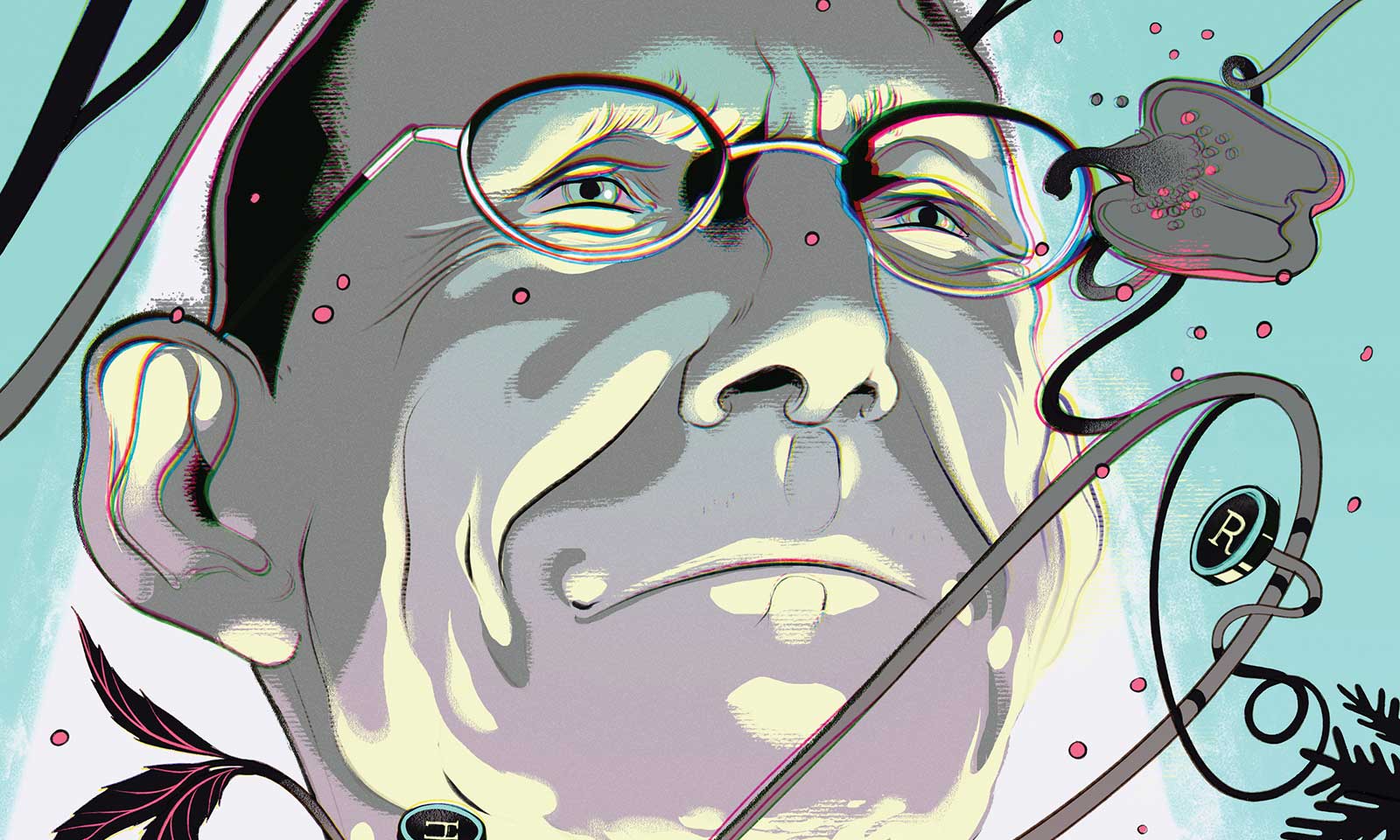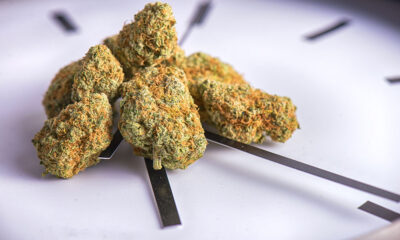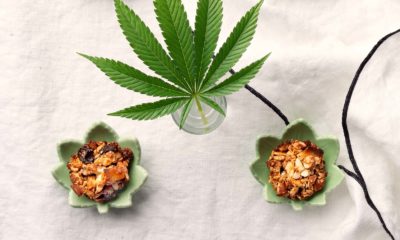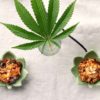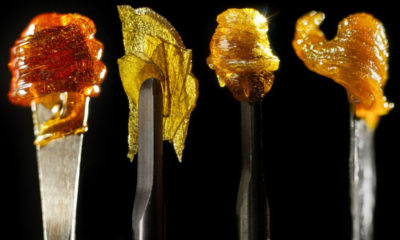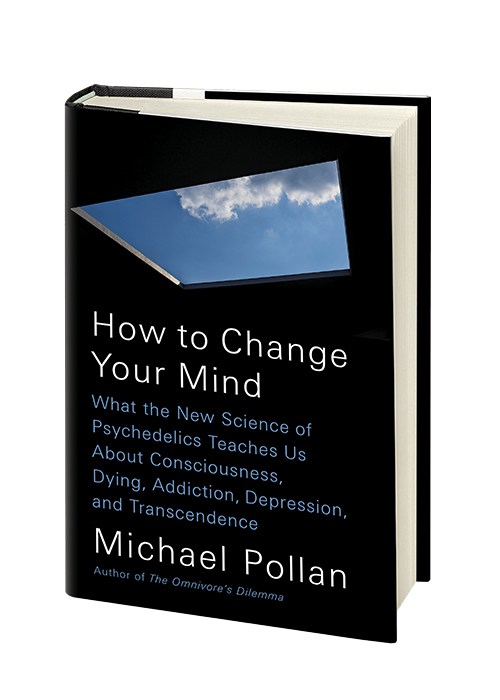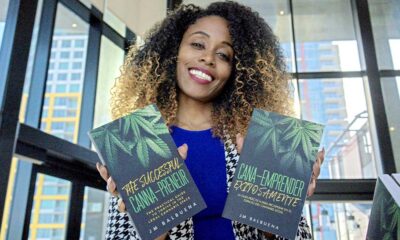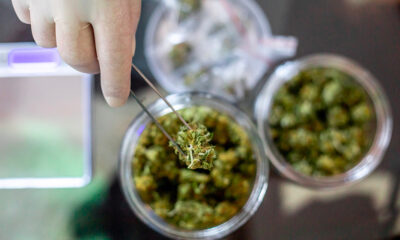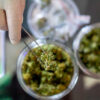Michael Pollan & The Landscape of the Mind
Michael Pollan delves into alternative wellness treatments in his new book focused on psychedelics.
Michael Pollan is best known for his groundbreaking, best-selling books on food — which collectively have helped spark a revolution in the way we think about what we eat and where it comes from — but he also has a longstanding interest in cannabis. As far back as 1995, he traveled to the Cannabis Cup in Amsterdam for a New York Times Magazine cover story on the growers and breeders behind the world’s highest-potency strains, a group of illicit horticulturalists he called “the best gardeners of my generation.”
“I had come to Amsterdam to meet some of these gardeners and learn how, in little more than a decade, marijuana growing in America had evolved from a hobby of aging hippies into a burgeoning high-tech industry,” he wrote. “Fewer than 20 years ago, virtually all the marijuana consumed in America was imported. ‘Home grown’ was a term of opprobrium — ‘something you only smoked in an emergency,’ as one grower old enough to remember put it. Today… American marijuana cultivation has developed to the point where the potency, quality and consistency of the domestic product are considered as good as, if not better than, any in the world.”
At the time, such high praise from one of the world’s leading journalists was virtually unheard of in the world of cannabis. In the article, Pollan even admitted to making his own furtive attempt to grow cannabis back in the 1980s, which he dubbed “a fiasco.” Later, he included cannabis as one of four species profiled in “The Botany of Desire,” his best-selling book that took a “plant’s eye view of the world.”
And now Pollan has gone a significant step further into the study of psychoactivity with his latest book, “How to Change Your Mind: What the New Science of Psychedelics Teaches Us about Consciousness, Dying, Addiction, Depression, and Transcendence.” Pollan defines psychedelics as substances that not only affect the mind (like cannabis), but are fully “mind manifesting,” noting the term itself was coined in 1956 by Humphry Osmond “to describe drugs like LSD and psilocybin that produce radical changes in consciousness.”
At a stop on his national tour to promote the book, he sat down for an interview that touched on everything from DMT extracted from toads and the brain’s “default mode network,” to the benefits of dissolving your ego and Pollan’s personal experiences taking various psychedelics with a series of underground guides.
Cannabis Now: You write about the ineffable nature of psychedelics, meaning the experience of taking them is difficult or impossible to describe in words. Given that challenge, I love your description of tripping as being like “shaking the snow globe” of the mind. But what does that mean exactly?
Michael Pollan: The snow globe metaphor comes from Robin Carhart-Harris, one of the leading neuroscientists studying psychedelics today, and the researcher who’s probably done the most analytical work to try to understand how psychedelics affect us and why they might be therapeutic. He’s even been using MRIs and other brain imaging tools to see what happens neurologically during a psychedelic trip. Just imagine being injected with psilocybin [the active compound in “magic” mushrooms] or LSD and then sliding into an MRI. That sounds like a recipe for disaster, so these are volunteers to whom we should all be grateful.
Anyway, what the researchers discovered really surprised them. Turns out one particular brain network called the default mode network was downregulated (i.e. suppressed) during the psychedelic experience.
What does that system do? And why might disrupting it prove beneficial?
The default mode network is a network of brain structures that are tightly linked, so they communicate a lot with each other. And what they do is connect structures in the cortex — the most evolutionarily recent part of the brain, where executive function takes place — to much older and deeper structures involved in memory and emotion. So this is a very important transit hub.
The brain has a hierarchical structure, and the default mode network kind of rides over the whole thing. It’s involved with self-reflection and self-criticism. It’s where our minds go to wander when we’re not doing something. It’s where we get our ability to think about the future or the past. And finally, it’s involved in what’s called “the autobiographical self” — a function of the brain that integrates all of your experiences into the story of your life and keeps that story going. Because without that story, you don’t really exist as an independent self.

Illustration Ryan Garcia for Cannabis Now
If the ego had an address, it would be the default mode network. So how interesting that when psychedelics temporarily put that network offline, people report “melting away” with no sense of self.
Now, why dissolving one’s ego might be helpful — that’s a whole other discussion. For starters, it’s possible that having a hyperactive default mode network could be responsible for various kinds of mental illness, especially those that involve obsessive rumination and getting stuck on really destructive stories about yourself. For instance: “I can’t get through the next hour without a cigarette.” Or: “I’m unworthy of love.”
That kind of rigidity of thinking is characteristic of anxiety, depression and addiction, which happen to be the three indications which, so far, psychedelics have proven the most valuable in treating.
What about the risks?
Psychedelics are not addictive or drugs of abuse. If you give rats a lever that dispenses cocaine, they’ll press it until they die, but give them the same lever with LSD and they’ll pull it once and never again. So the risks are largely psychological — and there are people who have psychotic episodes triggered by psychedelics, especially people at risk for schizophrenia.
Before moving forward with my own psychedelic experiences, I actually went to my cardiologist and told him what I was planning, and the only psychedelic he warned me off of was MDMA (ecstasy). He basically greenlighted the others, so off I went, on a series of really interesting journeys, all but one of which were guided by trained underground therapists.
Ideally, I would have participated in one of the fully legal clinical trials currently underway, but I didn’t qualify for any of them and perhaps they didn’t want a journalist hanging around anyway. So I took psilocybin from psychedelic mushrooms, LSD, 5-MeO-DMT from dried toad venom and ayahuasca. They were all very interesting experiences that taught me important things about myself and allowed for a certain stock-taking of life that I found invaluable.
Why do you think the authorities have been, at least until relatively recently, so hostile to psychedelics and the psychedelic mind state?
When psychedelics arrived in the United States, largely in the 1950s and ’60s, they arrived naked. Which is to say that these incredible molecules showed up, with very powerful properties, and unlike many other cultures which had long traditions of ceremonial and shamanistic use, we didn’t know how to use them. In those other cultures the psychedelic experience was regulated, guided and to some extent controlled by elders with decades of experience, but that’s not what happened here.
And so, while a lot of people had very positive experiences simply taking psychedelics at a concert or during a walk in the woods, some got into trouble. The experience of feeling your ego dissolve can be ecstatic but it can also be terrifying. And if there’s no one there to help you with that, you can get into a very dark place and have a panic reaction.
So that partly explains how the authorities reacted. But another big part of this is that psychedelics became a sacrament for the counterculture. Which was a very positive thing for the counterculture, but not for members of the establishment who were trying to send young men off to Vietnam to fight a war.
Psychedelics therefore became very frightening to the authorities.
Your experiences varied pretty widely, based on the specific psychedelic and set-and-setting. Which did you find most useful?
The most valuable experience was my guided psilocybin trip, where a lot of interesting things happened, but what was perhaps most helpful was having my sense of self dissolve completely. I saw myself blown into the wind like a sheaf of little Post-it notes, and I was fine with it. I had no desire to compile myself back together.
The consciousness that was perceiving this was not my usual consciousness. Aldous Huxley [author of “Brave New World”] would say it was “the mind at large.” And this is what I think has helped terminal cancer patients who’ve been given psychedelics to help deal with end-of-life anxiety. Taping into this kind of universal consciousness that doesn’t have the usual ego defenses attached to it can be incredibly liberating. It also could have been terrifying, but I felt safe and that’s really what’s important about having a guided experience.
You’re going to have to put down all of your mental defenses when taking a high-dose psychedelic trip and if you do that in a situation where don’t feel safe or trust the person that you’re with, it can be terrifying. But I did trust my guide, and so I was able to let go and surrender to the experience.
And the insight I brought away was, “Wow, I’m not identical to my ego.”
Ego is really important. Ego gets the book written, but it also gets in our way, and walls us off from other people and from strong emotions. I think ego consciousness is at the root of tribalism and the environmental crisis, because it separates us from nature. So to find out there’s another ground on which to stand, for me that was a real epiphany. I could have gotten there probably via 20 or 30 years of psychoanalysis, but I got there in an afternoon and that’s the power of psychedelics when used in the right context.
Then, after the experience comes the most important part, which we don’t talk about enough because we tend to focus on the trip itself. But if you’re engaged in therapist-assisted psychedelic therapy, as I was, there’s a formal session where you share your experience with the therapist and attempt to integrate it into the rest of your “normal” life.
When I reported my surprise at finding that I’m not the same as my ego, and how liberating that felt, the therapist said, “Well, that’s really worth the price of admission isn’t it? You’ve had a taste of another way to be and now you can cultivate that feeling and exercise that new muscle.”
TELL US, do you see a medical value in psychedelics?
Originally published in the print edition of Cannabis Now. LEARN MORE



